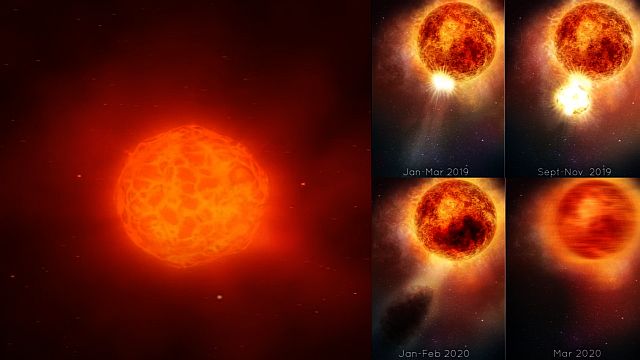Analyzing data from NASA's Hubble Space Telescope and several other observatories, astronomers have concluded that the bright red supergiant star Betelgeuse quite literally blew its top in 2019, losing a substantial part of its visible surface and producing a gigantic Surface Mass Ejection (SME). This is something never before seen in a normal star's behavior.
Our Sun routinely blows off parts of its tenuous outer atmosphere, the corona, in an event known as a Coronal Mass Ejection (CME). But the Betelgeuse SME blasted off 400 billion times as much mass as a typical CME!
The monster star is still slowly recovering from this catastrophic upheaval. "Betelgeuse continues doing some very unusual things right now; the interior is sort of bouncing," said Andrea Dupree of the Center for Astrophysics | Harvard & Smithsonian in Cambridge, Massachusetts.
These new observations yield clues as to how red stars lose mass late in their lives as their nuclear fusion furnaces burn out, before exploding as supernovae. The amount of mass loss significantly affects their fate. However, Betelgeuse's surprisingly petulant behavior is not evidence the star is about to blow up anytime soon. So the mass loss event is not necessarily the signal of an imminent explosion.
Dupree is now pulling together all the puzzle pieces of the star's petulant behavior before, after, and during the eruption into a coherent story of a never-before-seen titanic convulsion in an aging star.

